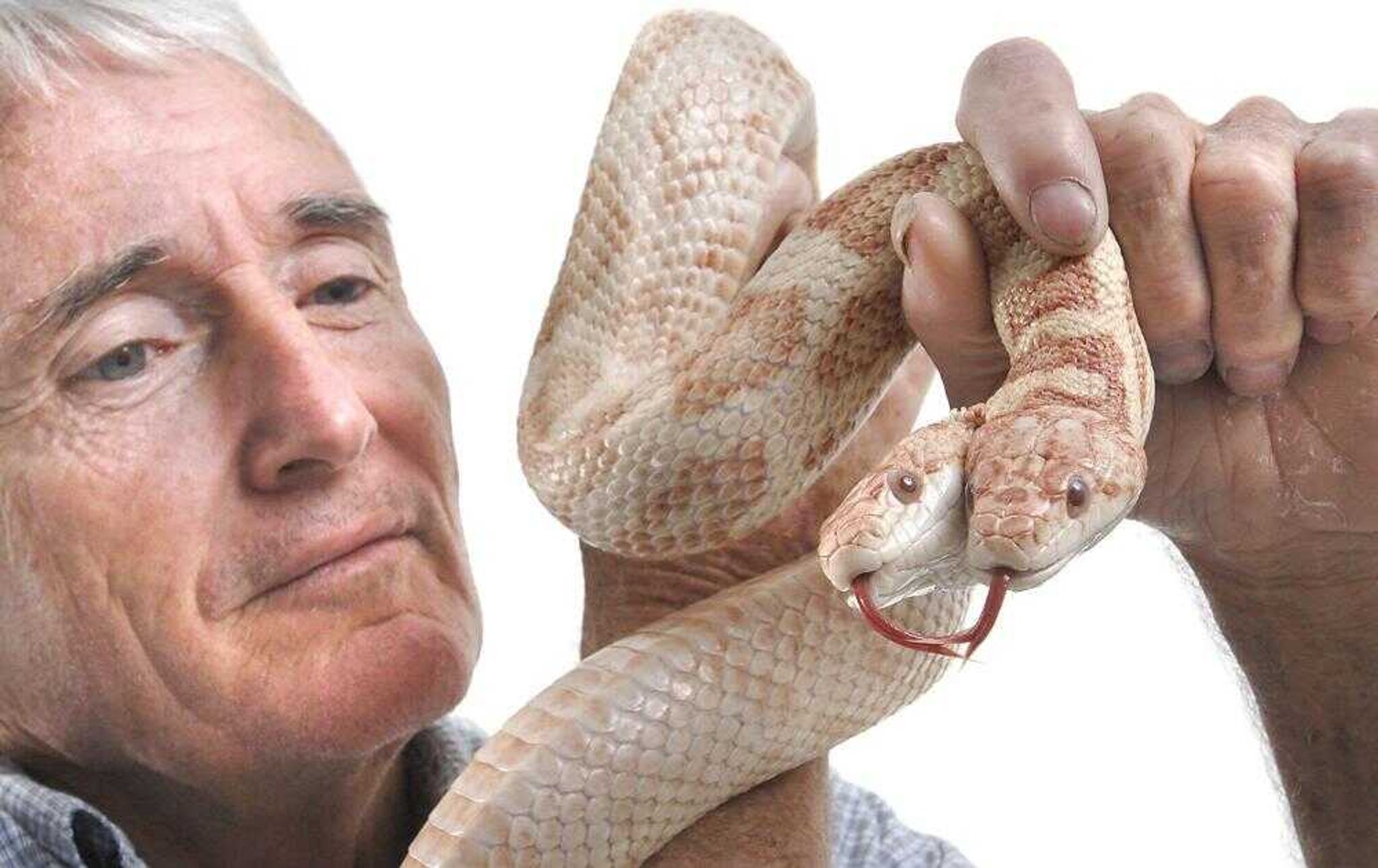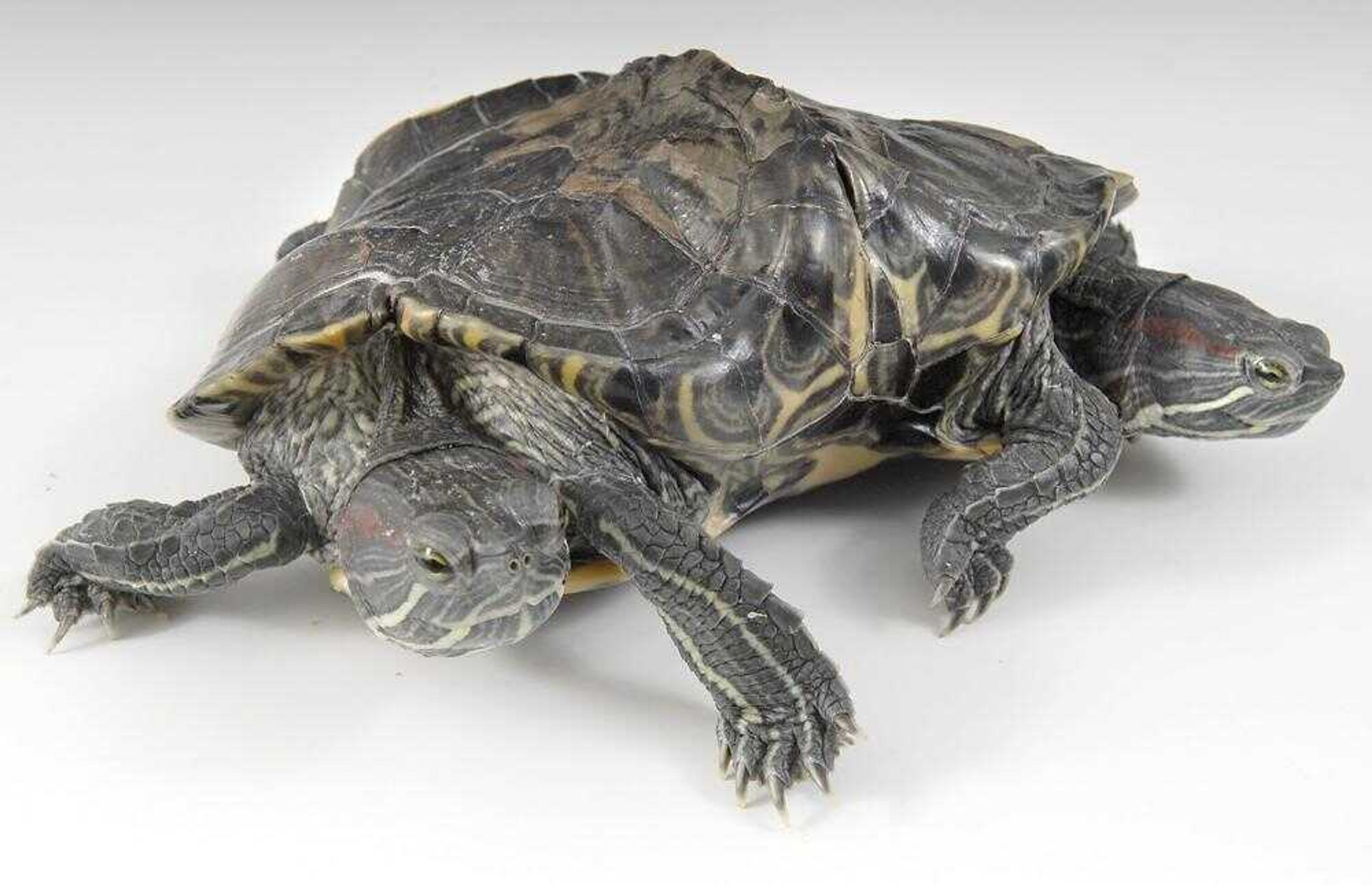Reptilian oddities rear their heads at fair
Two heads are better than one when it comes to attracting visitors to Fred Lally's tent at the SEMO District Fair. Lally set up shop this week at the fair grounds to display his exhibit of several reptilian oddities including a piar of two-headed turtles, a two-headed western diamondback rattlesnake and a two-headed albino black rat snake named Golden Girls...
Two heads are better than one when it comes to attracting visitors to Fred Lally's tent at the SEMO District Fair.
Lally set up shop this week at the fair grounds to display his exhibit of several reptilian oddities including a piar of two-headed turtles, a two-headed western diamondback rattlesnake and a two-headed albino black rat snake named Golden Girls.
"This one should be jet black," Lally said while showing 10-year-old Golden Girls.
His reptiles have been featured on Animal Planet and National Geographic.
Attendees to the SEMO fair can find them tucked in with carnival rides and corn dogs.
Lally began handling reptiles as a child in Louisiana when he would collect turtles, fish and snakes to sell for extra money. He started buying and selling snakes out of country singer Tex Ritter's old tour bus in the 1970s and joined the fair and carnival circuit in 1992.
He started looking to buy his first two-headed reptile in the 1980s.

"It's not pollution," Lally said. "Everybody's real quick to jump on that."
The scientific explanation for a two-headed reptile is the same as a Siamese twin: It's simply two eggs that unsuccessfully tried to separate, he said.
Zip N Pip, a 14-year-old two-headed turtle, has been with Lally for the turtle's entire life. Lally has been trying to breed the turtle with The Wild Ones, his 13-year-old double-bodied turtle.
Breeding is hard because it must be done in water and the two turtles are off-balanced, Lally said.
"All the books say it's not genetic," Lally said. But just as human families have a preponderance of twins, he believes reptiles do as well.
Connect with the Southeast Missourian Newsroom:
For corrections to this story or other insights for the editor, click here. To submit a letter to the editor, click here. To learn about the Southeast Missourian’s AI Policy, click here.










